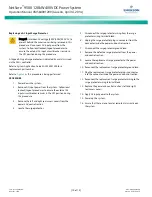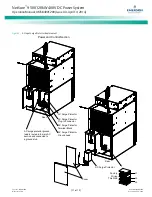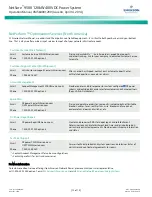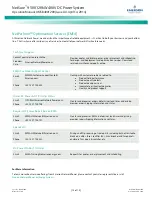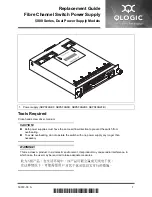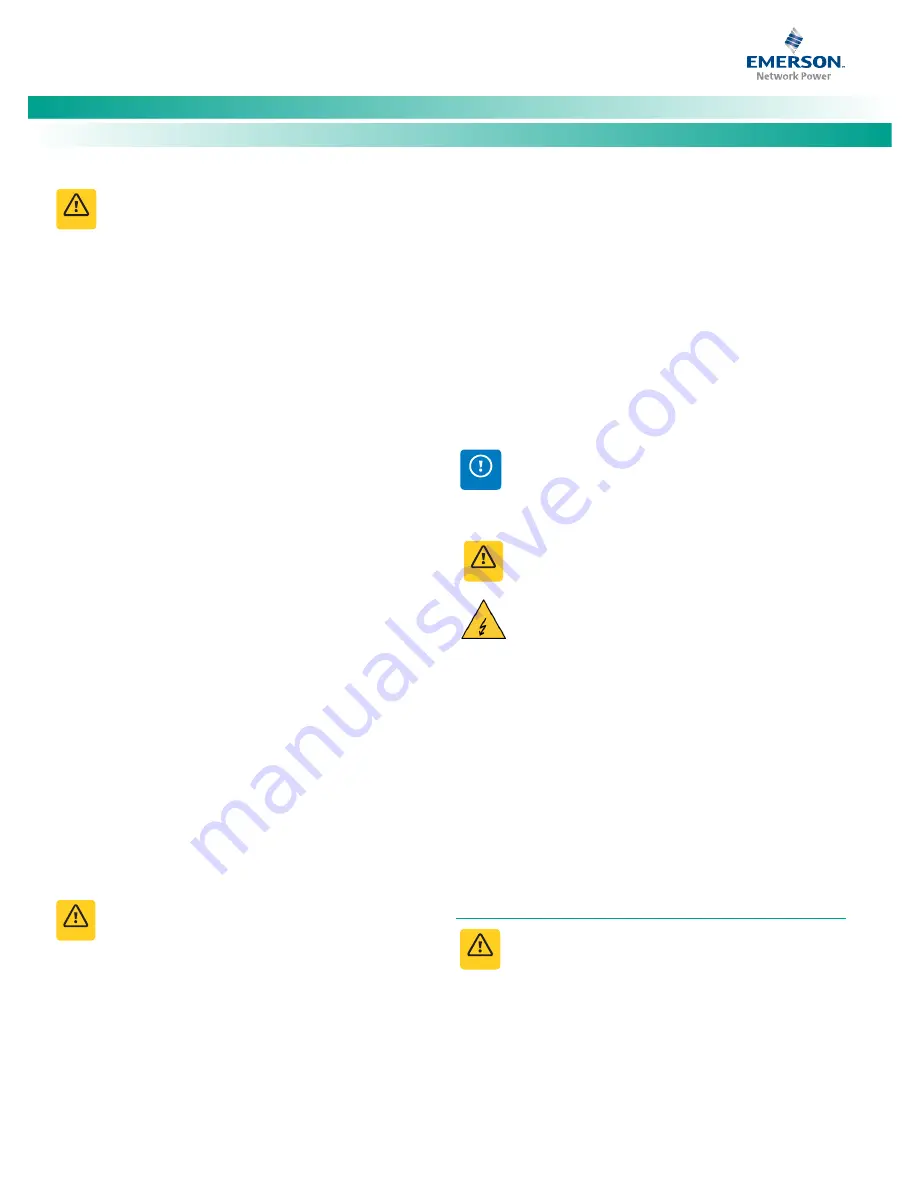
NetSure
™
9500 120kW 400V DC Power System
Operation Manual, UM584001200 (Issue AA, April 14, 2014)
Spec. No: 584001200
Code: UM584001200
Model No: 9500
Issue AA, April 14, 2014
[iv]
WARNING!
A battery can present a risk of electrical
shock and high short circuit current. Servicing of
batteries should be performed or supervised only by
properly trained and qualified personnel knowledgeable
about batteries and the required precautions.
The following precautions should be observed when
working on batteries:
•
Remove watches, rings, and other metal objects.
•
Eye protection should be worn to prevent injury
from accidental electrical arcs.
•
Use certified and well maintained insulated tools.
Use double insulated tools appropriately rated for
the work to be performed. Ensure that wrenches
with more than one working end have only one end
exposed.
•
Do not lay tools or metal parts on top of batteries.
•
Disconnect charging source prior to connecting or
disconnecting battery terminals.
•
Risk of explosion if battery is replaced with an
incorrect type or if polarity is reversed. When
replacing batteries, replace with the same
manufacturer and type, or equivalent.
•
Dispose of used batteries according to the
instructions provided with the batteries. Do not
dispose of batteries in a fire. They may explode.
•
ALWAYS FOLLOW THE BATTERY MANUFACTURER’S
RECOMMENDATIONS AND SAFETY INSTRUCTIONS.
In addition to the hazard of electric shock, gas produced
by batteries can be explosive and sulfuric acid can cause
severe burns. Do not open or mutilate batteries.
Released electrolyte is harmful to the skin and eyes, and
is toxic. If electrolyte comes into contact with skin, the
affected area should be washed immediately with large
amounts of water.
DANGER!
This equipment may be used in conjunction
with lead-acid batteries. Working near lead-acid
batteries is dangerous!
•
Batteries contain sulfuric acid.
•
Batteries generate explosive gases during normal
operation. Systems containing batteries should
never be installed in an airtight room or space.
Only install in a ventilated environment.
•
Batteries are an energy source that can produce
high amounts of electrical current.
FOR THESE REASONS, IT IS OF CRITICAL IMPORTANCE
THAT YOU READ THESE INSTRUCTIONS AND FOLLOW
THEM EXACTLY.
WHEN WORKING WITH LEAD-ACID BATTERIES:
•
Wear complete protection for eyes, face, hands,
and clothing. Examples are safety goggles or face
shield, a rubber apron and gloves.
•
If battery acid enters your eye, immediately flush
your eye with running cold water for at least 15
minutes. Get medical attention immediately.
•
If battery acid contacts skin or clothing, wash
immediately with soap and water.
ALERT!
Performing maintenance and/or
troubleshooting procedures may interrupt power to the
loads, if battery reserve is not sufficient.
Personal Protective Equipment (PPE)
DANGER! ARC FLASH AND SHOCK HAZARD.
Appropriate PPE and tools required when working on
this equipment. An appropriate flash protection
boundary analysis should be done determine the
“hazard/risk” category, and to select proper PPE. Notice
that PPE is applicable for both AC and DC voltages.
This product is intended only for installation in a
restricted access location.
Only authorized and properly trained personnel should
be allowed to install, inspect, operate, or maintain the
rack/equipment.
Do not work on LIVE parts. If required to work or
operate live parts, obtain appropriate Energized Work
Permits as required by the local authority, per NFPA 70E
“Standard for Electrical Safety in the Workplace” or
applicable local codes.
Maintenance and Servicing Procedures
General
WARNING!
All equipment maintenance and servicing
procedures involve internal access and should be carried
out only by trained personnel on a de-energized system.
Extreme caution is required when performing
maintenance and servicing procedures. Be constantly
aware that this system contains high DC as well as AC
voltages. Check for voltage with both AC and DC
voltmeters prior to making contact.
Special safety precautions are required for procedures
involving maintenance of this system and the batteries.
Warning
Danger
Alert
Danger
Warning


















